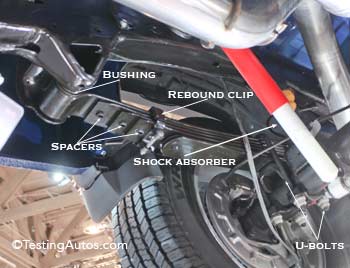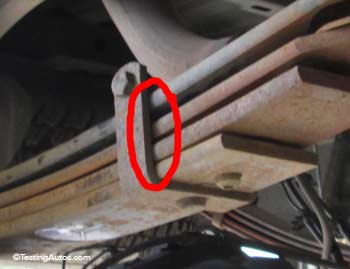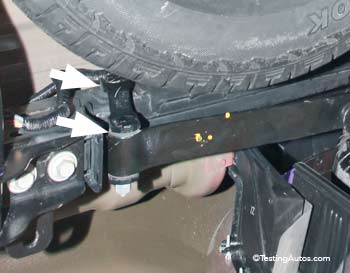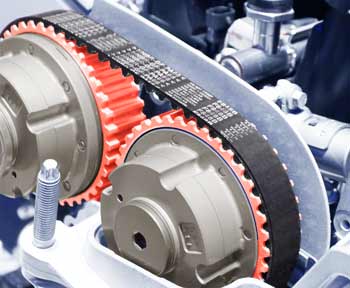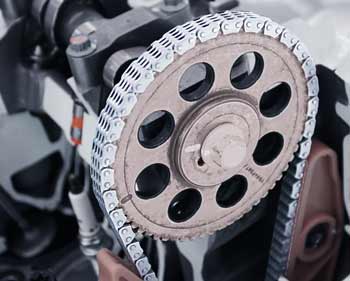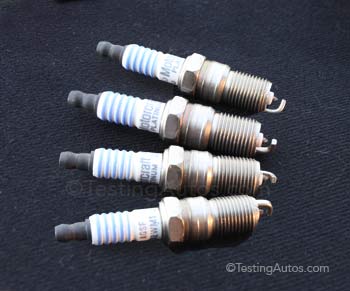Squeaking leaf springs: causes, repair options
January 28, 2021
You have a great truck, but it has one little problem: the rear leaf springs squeak. In most trucks, rear leaf springs are made of several "leaves." When a spring flexes, these leaves move against each other.
What are the common problems that cause squeaking?
- Sand, small rocks stuck between leaves
- Worn-out spacers (anti-friction pads)
- Leaf spring rubs against one of the rebound clips
- Squeaky leaf spring bushings
Rear suspension components may require regular cleaning with a power washer or a thorough rinse with a strong stream of water if the vehicle is operated in dusty or muddy environments.We also found the GM service bulletin 06-03-09-004M for the 1999-2007 Chevrolet Silverado and a number of other trucks about a squeaking noise from the rear of the vehicle. Here is the link to the bulletin on the NHTSA website. The bulletin recommends pressure-washing the leaf springs to clean the dirt first, then drying the springs with compressed air and then greasing the inserts (spacers) with a special lubricant. Judging by the part number of the lubricant provided in the bulletin, it's the Molykote ™ M77 paste. However, the bulletin warns that it's a temporary measure and periodic cleaning and re-applying grease may be necessary throughout the life of the vehicle. Many truck enthusiasts recommend not to use any grease on leaf springs, but in this case, we will take the manufacturer's (GM) recommendations. We also found the service bulletin NTB18-003 for the 2004-2015 Nissan Titan. The bulletin instructs cleaning the working surface of the rear leaf spring tip inserts (spacers) to solve the noise concerns.
It's worth noting that the fact that there is a service bulletin doesn't mean that the problem is covered under warranty.
Another common problem that often causes squeaking is when the inter-leaf spacers wear out allowing metal to metal contact between the leaves, see the photo.
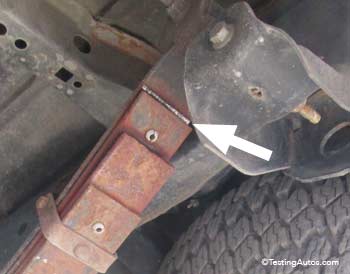 In this truck, squeaking was caused by a worn-out spacer that allowed metal-to-metal contact. See another illustration Fig 2.
In this truck, squeaking was caused by a worn-out spacer that allowed metal-to-metal contact. See another illustration Fig 2.Worn leaf spring bushings as well as shackle bushings are known to cause squeaking noises too. Parts are not expensive, but replacing leaf spring bushings involves a considerable amount of labor. In most cases, the leaf springs will need to be removed, although some mechanics can do the job with leaf springs in place. In many trucks new bushings will need to be pressed in. There are plenty of YouTube videos on how to do it.
Read Next:
When do leaf springs need to be replaced?
When should struts and shock absorbers be replaced?
How often should the wheel alignment be done?
When do the control arms need to be replaced?
When do the ball joints need to be replaced?
When does the tie rod end need to be replaced?
When to replace sway bar links?
When Should Tires be Replaced in a Car?
When do leaf springs need to be replaced?
When should struts and shock absorbers be replaced?
How often should the wheel alignment be done?
When do the control arms need to be replaced?
When do the ball joints need to be replaced?
When does the tie rod end need to be replaced?
When to replace sway bar links?
When Should Tires be Replaced in a Car?
